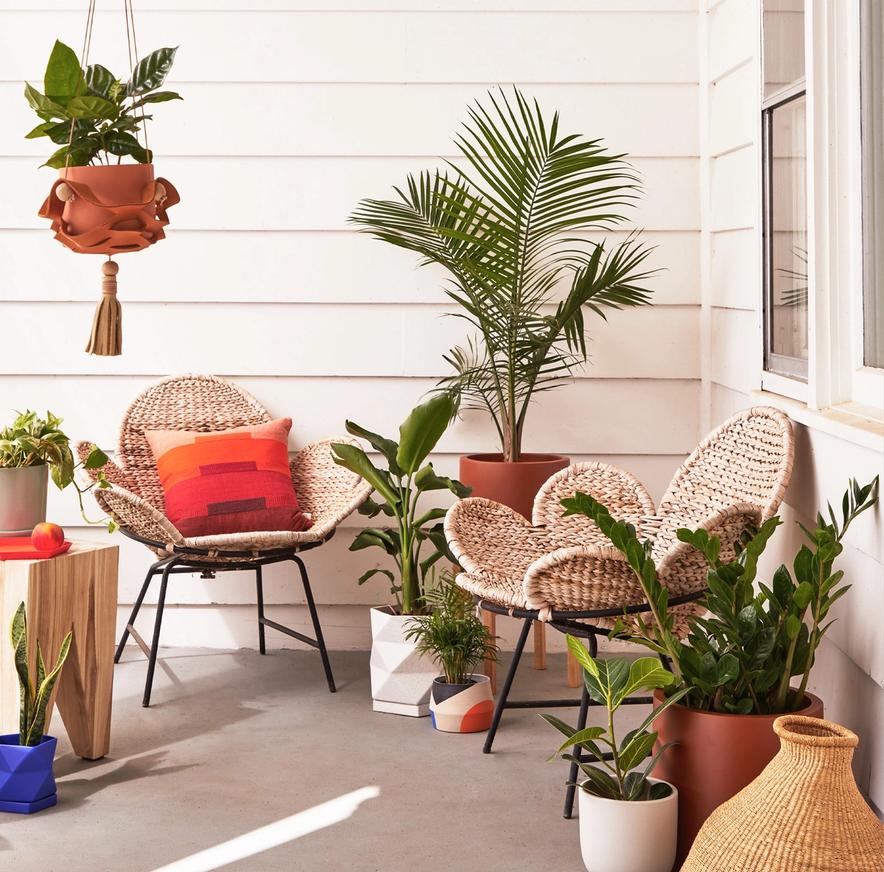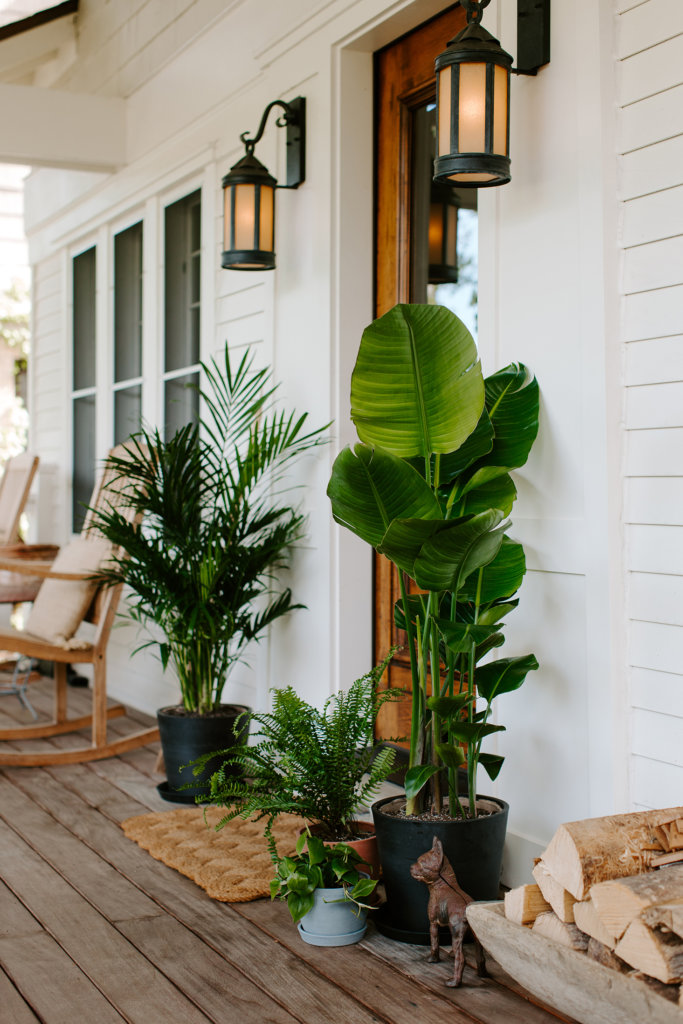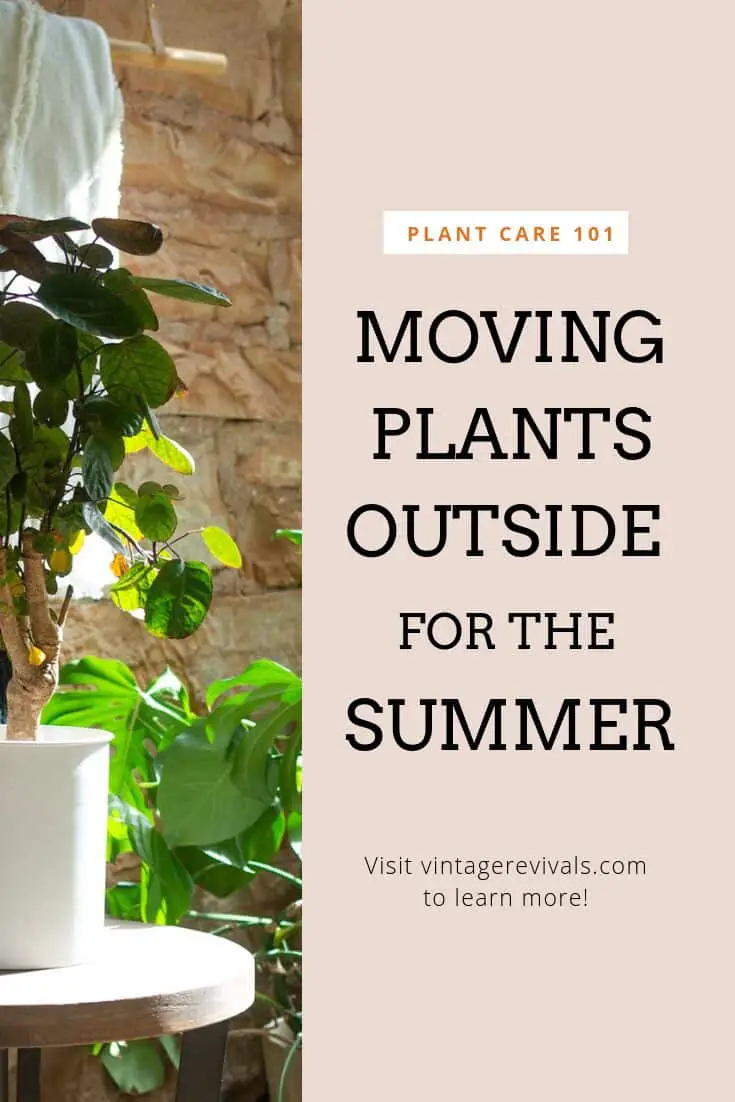Many house plants can thrive outside in the summer, such as ferns, begonias, and spider plants. Ensure they receive appropriate sunlight and water.
Summer provides an excellent opportunity to give your indoor plants a taste of the great outdoors. Moving house plants outside can boost their growth and overall health. Ferns, begonias, and spider plants are among the popular choices for this seasonal transition.
Place them in shaded or partially shaded areas to prevent scorching. Regular watering is essential, as outdoor conditions can dry soil faster. Monitor for pests and other outdoor threats. Successfully acclimating your house plants to outdoor conditions can result in lush, vibrant foliage. This seasonal practice can enhance both the aesthetics of your garden and the vitality of your plants.
Choosing Summer-friendly House Plants
House plants add beauty to your home. Some house plants thrive outside in summer. Choosing the right plants is important. These plants enjoy the fresh air and sunlight.
Factors To Consider
When choosing summer-friendly house plants, consider these factors:
- Light requirements: Some plants need full sun, others prefer shade.
- Water needs: Outdoor conditions can dry plants quickly.
- Temperature tolerance: Ensure plants can handle summer heat.
- Humidity levels: Outdoor air may be drier or more humid.
Benefits Of Outdoor Placement
Placing house plants outside in summer has many benefits:
- Improved growth: Plants get more sunlight and fresh air.
- Pest control: Natural predators help control pests.
- Pollination: Outdoor exposure aids in plant pollination.
- Increased oxygen: Plants produce more oxygen outside.
| Plant | Light | Water | Temperature |
|---|---|---|---|
| Spider Plant | Indirect Sun | Moderate | 60-75°F |
| Snake Plant | Direct Sun | Low | 70-90°F |
| Boston Fern | Partial Shade | High | 60-75°F |
Choose plants that fit your outdoor space. Enjoy vibrant house plants all summer long!

Credit: www.thesill.com
Snake Plant
The Snake Plant, also known as Sansevieria or Mother-in-Law’s Tongue, is a popular indoor plant. Its striking upright leaves make it a favorite for many. Surprisingly, it can thrive outdoors during the summer. Discover how to care for this resilient plant outside with the right conditions and care.
Ideal Conditions
The Snake Plant is quite hardy. It can handle a range of conditions. Here are the ideal conditions:
- Light: Partial shade to full sun
- Temperature: Between 60-85°F (15-29°C)
- Soil: Well-draining, sandy soil
- Humidity: Low to moderate
Ensure your plant is not exposed to freezing temperatures. Snake Plants can’t survive frost.
Care Tips
Proper care ensures the Snake Plant thrives outdoors in summer.
- Watering: Water sparingly. Let the soil dry out between waterings.
- Feeding: Use a balanced liquid fertilizer once a month.
- Pruning: Remove any damaged leaves to encourage new growth.
- Pests: Watch for common pests like spider mites and mealybugs.
Avoid overwatering to prevent root rot. Snake Plants prefer dry conditions.
| Condition | Requirement |
|---|---|
| Light | Partial shade to full sun |
| Temperature | 60-85°F (15-29°C) |
| Soil | Well-draining, sandy soil |
| Humidity | Low to moderate |
Follow these tips to enjoy a healthy and vibrant Snake Plant all summer long!
Spider Plant
The Spider Plant (Chlorophytum comosum) is a popular houseplant known for its easy care. In the summer, this resilient plant can thrive outdoors. Its long, arching leaves and tiny white flowers make it an attractive addition to any garden or patio.
Sunlight Requirements
Spider Plants prefer indirect sunlight. Place them in a spot with bright but filtered light. Too much direct sunlight can scorch their leaves. A shaded porch or under a tree is ideal for them during summer.
Watering Needs
Spider Plants need consistent watering. Keep the soil slightly moist but not soggy.
Water them once a week or when the top inch of soil feels dry. Use well-draining soil to prevent root rot. Avoid letting the plant sit in water.
| Sunlight | Watering |
|---|---|
| Indirect sunlight, bright but filtered light | Water once a week, keep soil slightly moist |
| Shaded porch or under a tree | Use well-draining soil |
Aloe Vera
Aloe Vera is a popular house plant with many uses. It thrives in warm weather. During summer, you can move Aloe Vera outside. This will allow it to soak up the sun and grow even better.
Health Benefits
Aloe Vera is known for its healing properties. It can soothe burns and cuts. The gel from the leaves helps skin heal faster. It also reduces inflammation and pain.
People use Aloe Vera gel for skin care. It keeps skin moisturized and clear. Aloe Vera is also good for digestive health. Drinking Aloe Vera juice helps with digestion and reduces stomach problems.
Here is a quick list of Aloe Vera’s health benefits:
- Soothes burns and cuts
- Reduces skin inflammation
- Moisturizes skin
- Improves digestive health
Outdoor Care
Taking care of Aloe Vera outside is simple. Follow these steps to ensure it stays healthy:
- Choose the right spot: Place Aloe Vera in a sunny area. It needs at least six hours of sunlight each day.
- Water properly: Water the plant deeply but infrequently. Let the soil dry out completely between waterings.
- Protect from pests: Watch for bugs like aphids and mites. Use natural sprays to keep them away.
- Bring indoors before frost: Aloe Vera cannot survive frost. Bring it inside before temperatures drop.
Here is a table summarizing Aloe Vera’s outdoor care needs:
| Care Aspect | Details |
|---|---|
| Sunlight | At least six hours daily |
| Watering | Deeply but infrequently |
| Pest Control | Natural sprays for bugs |
| Temperature | Bring inside before frost |
Peace Lily
The Peace Lily is a popular indoor plant known for its elegant white blooms and lush green leaves. This beautiful plant can also thrive outdoors in the summer, adding a touch of serenity to your garden or patio. To ensure your Peace Lily flourishes, let’s explore its specific needs for light, soil, and watering.
Light Preferences
Peace Lilies prefer indirect light. They thrive best in shaded areas. Direct sunlight can scorch their leaves. Place them in areas with dappled sunlight or partial shade.
- Shaded patios
- Beneath trees
- On a covered porch
Soil And Watering
Peace Lilies need well-draining soil. Use a mix of peat moss, pine bark, and perlite. This combination ensures the soil stays moist but not waterlogged.
| Soil Component | Percentage |
|---|---|
| Peat Moss | 50% |
| Pine Bark | 25% |
| Perlite | 25% |
Water your Peace Lily regularly. Keep the soil consistently moist. Avoid letting the soil dry out completely. Overwatering can cause root rot, so ensure good drainage.
- Check soil moisture every few days.
- Water thoroughly until water drains out.
- Let the top inch of soil dry before watering again.
By following these guidelines, your Peace Lily will thrive outdoors during the summer, providing a beautiful and calming presence to your outdoor spaces.

Credit: ocsucculents.com
Rubber Plant
The Rubber Plant is a popular houseplant known for its large, glossy leaves. It’s easy to care for and can thrive both indoors and outdoors during the summer. This plant adds a touch of green beauty to any space.
Temperature Tolerance
Rubber Plants prefer warm temperatures. They thrive in temperatures between 60°F and 75°F (15°C to 24°C). Avoid placing them outside if the temperature drops below 50°F (10°C). They do not tolerate extreme cold or frost.
Maintenance Tips
Taking care of a Rubber Plant is simple. Here are some maintenance tips:
- Watering: Water the plant when the topsoil is dry. Avoid overwatering.
- Sunlight: Place it in a spot with indirect sunlight. Too much direct sunlight can scorch the leaves.
- Fertilizing: Feed the plant with a balanced liquid fertilizer once a month during the growing season.
- Pruning: Prune any dead or yellow leaves to keep the plant healthy and looking good.
- Pest Control: Check for pests like spider mites and treat them with insecticidal soap if needed.
Follow these tips to keep your Rubber Plant happy and healthy outdoors during the summer.
Zz Plant
The ZZ Plant is a popular houseplant known for its resilience. It can thrive in low light and requires minimal care. But did you know it can also be placed outside in the summer? This hardy plant can add a touch of green to your outdoor space. Let’s explore how to care for your ZZ Plant outdoors during the summer months.
Sun Exposure
The ZZ Plant prefers indirect sunlight. Direct sunlight can scorch its leaves. Place it in a shaded area like under a tree or on a covered porch. This helps it receive dappled sunlight. Avoid placing the plant in direct afternoon sun.
Soil And Fertilization
The ZZ Plant thrives in well-draining soil. Use a mix of potting soil and sand for best results. This prevents water from pooling around the roots. Overwatering can lead to root rot.
Fertilize the ZZ Plant during the growing season. Use a balanced liquid fertilizer once a month. Avoid over-fertilizing as it can damage the plant. Ensure the soil is moist before applying fertilizer.
| Aspect | Requirement |
|---|---|
| Sun Exposure | Indirect sunlight, shaded area |
| Soil | Well-draining, mix of potting soil and sand |
| Fertilization | Balanced liquid fertilizer, once a month |
- Indirect sunlight prevents leaf scorch.
- Use well-draining soil to avoid root rot.
- Fertilize once a month during summer.

Credit: bloomscape.com
Tips For Transitioning Plants Outdoors
Transitioning house plants outdoors for the summer can be exciting. Many plants thrive with fresh air and natural sunlight. But, it’s important to do it right. Follow these tips to ensure your plants adjust smoothly.
Acclimatization Process
Acclimatization is key for plant health. Start by placing plants outside in a shaded area. Gradually increase sunlight exposure over a week. This helps plants get used to the new environment.
| Day | Sunlight Exposure |
|---|---|
| 1-2 | 1 hour |
| 3-4 | 2 hours |
| 5-6 | 3 hours |
| 7+ | Full Sunlight |
Water plants well during this period. Outdoor air can dry them out quickly. Ensure the soil stays moist but not waterlogged.
Common Mistakes To Avoid
- Too Much Sunlight Too Soon: Sudden exposure can scorch leaves. Gradual exposure is best.
- Ignoring Weather Conditions: Wind, rain, and temperature changes can stress plants. Monitor the weather closely.
- Overwatering: Outdoor conditions differ from indoors. Check soil moisture regularly.
- Neglecting Pests: Outdoor plants attract pests. Inspect plants regularly for bugs.
Make sure to provide shelter during storms. Strong winds and heavy rain can damage plants. Use stakes or cages for support if needed.
Frequently Asked Questions
Can I Put My Houseplants Outside In Summer?
Yes, you can put houseplants outside in summer. Gradually acclimate them to prevent shock. Ensure proper lighting and watering.
Can You Put A Spider Plant Outside In The Summer?
Yes, you can put a spider plant outside in the summer. Ensure it gets indirect sunlight and stays hydrated.
Can I Put My Philodendron Outside In Summer?
Yes, you can place your philodendron outside in summer. Ensure it’s in a shaded area with indirect sunlight. Avoid direct sun.
Can I Put My Monstera Outside In Summer?
Yes, you can put your monstera outside in summer. Ensure it gets indirect sunlight and stays warm. Protect it from harsh winds and excessive rain.
Conclusion
Choosing the right house plants for summer can enhance your outdoor space. Many indoor plants thrive outside. Ensure they receive proper care and sunlight. Experiment with different varieties to find what works best. Enjoy the vibrant greenery and fresh air all summer long.
Happy gardening!

My mission is to help you bring the beauty of nature indoors with expert advice, detailed plant care guides, and creative design ideas.





Leave a Reply